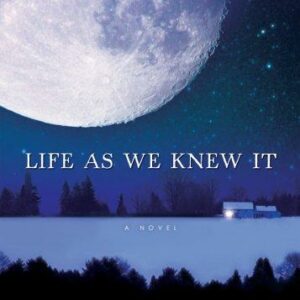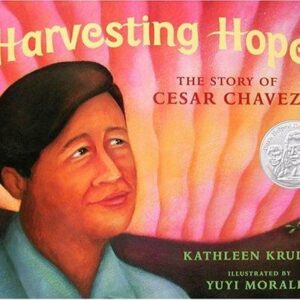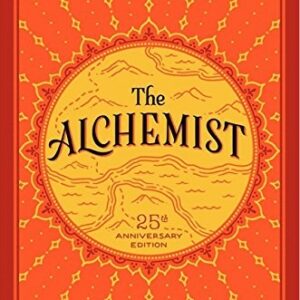A Place in the World
$27.00
| Title | Range | Discount |
|---|---|---|
| Trade Discount | 5 + | 25% |
- Description
- Additional information
Description
NEW YORK TIMES BESTSELLER • A lyrical and evocative collection of personal stories from the author of Under the Tuscan Sun, in which the queen of wanderlust reflects on the comforts of home.“A soulful meditation on ‘what home means, how it hooks the past and pushes into the future’ . . . spellbinding.”—Publishers Weekly (starred review)
Though Frances Mayes is known for her travels, she has always sought a sense of home wherever she goes. In this poetic testament to the power of place in our lives, Mayes reflects on the idea of home, from the earliest imprint of four walls to the startling discoveries of feeling the strange ease of homes abroad, friends’ homes, and even momentary homes that spark desires for other lives. Her musings are all the more poignant after so many have spent their long pandemic months at home. From her travels across Italy—Tuscany, of course, but also Venice and Capri—to the American South, France, and Mexico, Mayes examines the connective tissue among them through the homes she’s inhabited.
A Place in the World explores Mayes’s passion and obsessions with houses and the things that inhabit them—old books, rich food, beloved friends, transportive art. The indelible marks each refuge has left on her and how each home influenced the next serve as the foundations of its chapters.
Written in Mayes’s signature intimate style, A Place in the World captures the adventure of moving on while seeking comfort in the cornerstone closest to all of us—home. “A Place in the World is an homage of sorts to the South, where [Mayes] grew up. . . . The experience is both a homecoming and a reckoning with the past.”—The Washington Post“Sparkling . . . There are so many lovely descriptions of Mayes’ houses in A Place in the World, but this is not a book about buildings . . . It’s about the concept of home, that intangible thing . . . It’s a whirlwind home tour and homage to friendship . . . A beautiful, thought-provoking read.”—BookPage, (starred review)“Mayes delivers a soulful meditation on ‘what home means, how it hooks the past and pushes into the future’ in her spellbinding latest. She examines the question through an evocative tour of her homes. . . . This rich testament to the pleasures of wanderlust and permanence is a gift.”—Publishers Weekly (starred review)“Another lush account of family and place . . . The writing is characteristically intimate, as if she is sharing her thoughts and feelings with a dear friend, and she employs eloquent and detailed descriptions, creating a wonderful sense of place. A can’t-miss hit for Mayes fans.”—Kirkus Reviews (starred review)“Mayes, known for her wanderlust, stops and takes into consideration a place key in people’s lives. In her essays, [she] examines the concept of home and how people gravitate to the places and people that mean the most, even in a foreign landscape.”—Library Journal Frances Mayes is the author of the classic Under the Tuscan Sun, which was a New York Times bestseller for more than two and a half years and became a movie starring Diane Lane. Her other international bestsellers include Bella Tuscany, Every Day in Tuscany, A Year in the World, and three illustrated books: In Tuscany, Bringing Tuscany Home, and The Tuscan Sun Cookbook. Mayes is also the author of two novels, Swan and Women in Sunlight, six books of poetry, and The Discovery of Poetry. Her most recent books are See You in the Piazza and Always Italy. Frances Mayes’s writing has been translated into more than fifty languages. 1. Frances Mayes has often written about feeling at home in places that were not or never could be home. As a traveler, have you imagined another life in another place?
2. Why do some places happen to hit us like lightning, making us so taken with them that we are willing to upend our lives to be there? What powers would those places need to have for you?
3. For the author, Provence planted the seeds of a new perception. Travel can do that if you’re open to a place. What did Provence offer? Has a place ever had such an effect on you?
4. Where do people get their ideas of what comprises home for them? Do we carry our earliest senses of home with us for the rest of our lives?
5. The book explores friendship—including friends’ homes—in detail. In what ways are the homes of friends revealing of the friendship or of the friends themselves? Is it always true that our homes reveal who we are?
6. Food and good meals are mentioned throughout A Place in the World. How are food, memory, and home intertwined?
7. How has our digital world changed travel? In this day and age of selfies, social media, Google Maps and Translate, WhatsApp, et cetera, can travel still feel “foreign”?
8. Mayes reflects on stone in the formation of a house—lasting hundreds of years, reminding residents that they are simply passing through in the life of an old house. Did your perception of stone change? How do you see it now?
9. Talk about the shrine at Bramasole. Why does it have such a life of its own? Does it make you want to create a shrine in your own home?
10. “Why Stay?” is the title of the last section of the book. How would you answer this question? Chapter I
A House Down SouthLighting Seven Fireplaces
2010. Chatwood captured me because I thought if I lived here, I never would want to move again. Here’s the musical crystal ball: Shake it and snow swirls. The place never will change. The sturdy farmhouse, anchored by four chimneys, stands on a gentle rise. Above the front porch, the windows are not symmetrical. I like that. The roof is ugly and we will replace it with metal. There is a hidden hive, and I put my hand on the kitchen wall and feel the boards hum. The Eno River runs by, and I love the murky, tannic smell of rivers. On the edge of the woods a fresh stream jets out of the ground, cold and holy, and a tumbled stone foundation remains of the old springhouse, where generations kept their food chilled. And so I settled in, convinced that I’d grabbed a star out of the sky.
As fires always roar, and rain pours, so do farmhouses ramble. The porch running the length of a room converts into a sunroom, a favored spot on winter mornings. A bathroom becomes a closet, and a new bath is added. The lean-to shed converts to a kitchen. The floor plan sprawls like tiles on a Scrabble board. Add, subtract, multiply, divide: The attic becomes a reading room, another attic makes a good study. The house groans but accommodates.
From my upstairs window, I see a brick-walled three-room rose garden, a nymph statue that looks lascivious, and, beyond, the pleasing meadow stretching to the river. I took down a view-blocking, half-dead tree and planted camellias. This spring, I have a large half-moon cleared for a wildflower garden. Already a plot is turned over and a bench placed for viewing the blooms. Anticipation is half of gardening’s pleasures.
If an old house is a book to read—and it is—the upstairs study may be my favorite chapter in this house’s long history. In the 1920s, the paneled room where I’m writing served as a fifteen-by-twenty-foot schoolhouse. An ancient neighbor recalled, “When the Altvaters moved in [1937], there were still at least a dozen school desks, homemade pine boards with the seat for the next desk attached to the front, and pigeonholes on the desktops for pencils, ink, and erasers. Set in rows, the back desks used chairs along the wall.” I’m charmed that a Miss Sally Miller was the teacher. I can see Miss Miller in flower-sprigged navy dress and white collar, a dozen farm children wearing overalls and flour-sack pinafores. Their rough shoes and chapped cheeks. The teacher builds a fire, and the room overheats, sending out the smell of Octagon soap, chalk dust, gum erasers. They pledge allegiance to the droopy flag in the corner. They call out the multiplication table; they learn Wordsworth’s poem about daffodils because this house floats on a wave of trumpeting yellow blooms in spring. On a shelf, tin buckets hold their lunches. Cold sweet potatoes, biscuits, and syrup.
I like to conjure the long-ago children enthralled or trapped here on a late May day, close to summer vacation. When I’m stuck on a description, blanking out for a next line, staring out the window, I’m cheered to think this was where they turned the thin pages of the Bible, saw a picture of Washington crossing the Delaware, and read Kipling’s The Jungle Book. The first thing to know about living in an old house: the walls are alive.
This is not a dream study. I keep my desk, instead of a convenient one with drawers, because it reminds me of Virginia Woolf’s. Sturdy columnar legs, worn patina of walnut, and a pocked leather top the color of old claret. Floor-to-ceiling bookshelves, others built under the windows, are jammed with my fiction collection, which I’ve never alphabetized. (Poetry and nonfiction are kept downstairs.) I can’t find what I know I have. Despite four windows, the room is dark, and I hate gloomy rooms. I turn on the ceiling light, the two desk lamps, and the reading light beside a chair. Still not what you’d call bright, but the heart-pine walls send out a honeyed glow. On gloomy days, cozy, cozy. A fire feels cheery, especially when my two gentlemen cats choose my chairs for their naps.
The schoolroom is a relatively recent page in the saga of my house that creaks like a schooner (pegs and handmade nails working in and out) in the wind. I only can imagine most of the place’s history. What I know comes from a few articles, a deceased neighbor’s oral history, interviews, and a handful of letters in crabby handwriting that contradicts dates and sometimes veers into speculation. The earliest notes mention a Quaker named Isaac Lowe, one of a large family who held several land grants in Virginia. The land came to them in 1763 from the Earl of Chattharm or Chatthorn. I can’t read the handwriting but am spooked that the first syllable of the name was repeated in the house’s eventual name.
The first recorded house was built by other Quakers, the Faucettes, in the 1770s. When that burned, they rebuilt in 1806 or 1808 a plain but dignified Federal house of four large rooms, an attic room, and a kitchen. This is one of two of the period in North Carolina constructed for both commercial and residential space. We have two front doors because Robert Faucette, a miller, opened one into an inn and tavern, the other into his family residence. “Inn” sounds grand for the two rooms where sleepers must have piled onto corn-husk mattresses infested with mites, but each has a fireplace, mellow floors (some boards eighteen inches wide), and many-paned windows, which have bubbly glass that makes the view seem subterranean. When we remodeled the attic, we found Roman numerals carved into each succeeding beam and wooden pegs holding wall intersections together.
With frontage on the river and a quarter mile from a grist mill, traders and farmers brought their corn to be ground and had a place to stay if the water ran high. The Salisbury stagecoach came this way. General Cornwallis and his troops forded the river on February 26, 1781, en route to the Battle of Guilford Courthouse. Our narrow lane once was known as the Great Road, the Buffaloe Road, King’s Highway, and before those as a native trading path for the Occaneechi tribe. As a coach forded the river, the driver sounded a bugle to let the innkeeper know it was arriving. Maybe Mrs. Faucette (no record of her given name) served roasted venison, wild turkey, and river catfish to hungry passengers.
The grist mill, operated into the 1920s, stands intact, though its wheel has been lost. There’s a ghostly aura with a reason for that. Out walking, I always stop at a grave near the pond. Mallie Bryant, aged twelve, died in 1918. He fell out the mill’s window onto cascading water and rocks. Elsewhere, a world war raged. Around his stone, daffodils pop up every spring. Under a hump of dirt next to him lies his mother, her grave unmarked because she died by suicide, unable to go on after her boy died.
During the 1930s, our house was brought back from ruin by the Altvater family. (Altvater means “high water,” the situation that gave the earlier inn many customers.) Their daughter, Barrie, still owns the grist mill. She and her husband attached the home they built to a tiny mill keeper’s house facing the river and pond.
Barrie’s parents, Peggy and Vernon Altvater, added a wing onto the Coach House, as Chatwood was then called. At the southwest corner, Vernon attached another dwelling known as the Naile Johnson House, also a Federal period home rebuilt with pegs that he dismantled from its original location out on St. Mary’s Road and from paneling and flooring from other old properties. The one very large room, and the upstairs over it, added space that the cramped Quaker innkeepers would have enjoyed. Can’t you feel in your shoulders and spine when you’ve entered a well-proportioned room? Heart-pine floors gleam like dark amber. A great fireplace stands at the west end, flanked by windows with wavy glass panes that fill with sunset. The raised-panel mantel, the long-waxed paneled walls with bookcases and cabinets seem to have always been there. Most interior designers would walk in and slap pale Scandinavian wash over the walls. Although I felt the same impulse at first, now I never would paint away the warmth that seems to emanate from them. Few rooms I’ve entered in my life have personified haven to me, and this is one of them. Vernon Altvater couldn’t know when he dismantled and hauled the Naile Johnson House how much pleasure he would give to someone eighty years later.
A gesture of his small son abides. On the door to the unfinished attic space that we transformed, I decipher the scrawling in crayon, barely legible: Wesley’s Office KEEP OUT. Decades later, my grandson tacked his own PRIVATE notice in the same place. (How early the instinct for one’s own sanctum occurs.) The low room, earlier, used to be the maid’s quarters. A trapdoor opened to the kitchen below, and she climbed up by a ladder kept beside the fireplace. Since the early owners were Quakers, I hope “maid” in the records did not mean an enslaved woman. No way to know. CA
Additional information
| Weight | 1 oz |
|---|---|
| Dimensions | 1 × 6 × 9 in |








